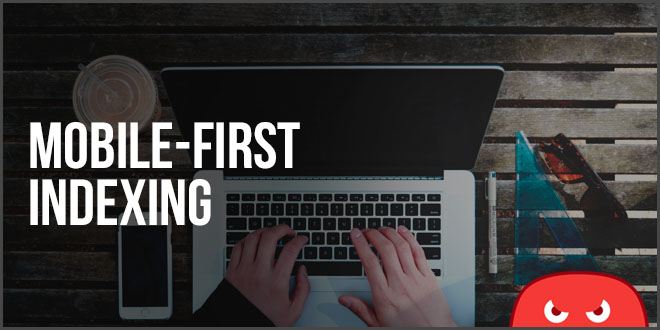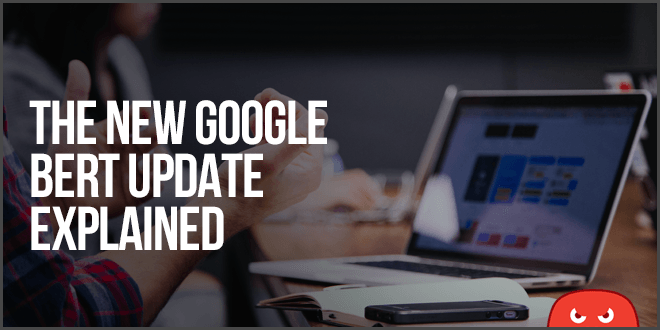Quick Links
Yesterday Google announced that it has begun the process of rolling out mobile-first indexing to more sites. After a year and a half of testing and experimentation, this is the latest development in Google’s efforts to make the internet more mobile-friendly and resemble user trends.
It’s the first time Google has confirmed moving a large number of sites to their mobile-first indexing process. Back in 2016, Google first detailed its plan to change the way its search index operates, alerting us how the algorithms would eventually shift to use the mobile version of a website’s content.
Last October Google said it had begun to transition a small handful of sites, but declined to say which properties had been made the move. But this recent Google announcement makes it sound like the process of mobile-first indexing on a large scale has officially begun.
But there’s also a lot of confusion around what this means for the average business owner. Do you have to change anything? Nothing? Everything? If your site is mobile-friendly, will that be good enough?
In this post we’ll go over the basics of what “mobile-first indexing” means, and how it will effect your site!
What is mobile-first indexing?
Mobile-first indexing is exactly what it sounds like. All it means is the mobile version of your website becomes what Google sees first when determining their index and search rankings. This is all in an effort “to better help our – primarily mobile – users find what they’re looking for,” Google writes in a blog post.
Since there are now more searches being conducted on mobile devices than desktop browsers, this is a way for Google to ensure the majority of users find content that’s optimized for their screen.
Google also explains that it will have one index for search results, not a mobile-first index that’s separate from its main index. In other words, it will begin the indexing process with mobile web pages, not the desktop version.
If a site does not have a mobile-friendly version then Google will still crawl and index the site as-is. All content will live within the same index, but Google will now be using the mobile versions when available.
Rankings will not be affected
Google is assuring site owners that mobile-first indexing will not have an impact on rankings. This is simply a change to how content is gathered for Google’s index. In other words, a site that has been migrated to mobile-first indexing will not have an advantage over a site that has not yet been migrated.
It’s called “mobile-first” because it’s not a mobile-only index: for instance, if a site doesn’t have a mobile-friendly version, the desktop site can still be included in the index. But the lack of a mobile-friendly experience could impact negatively on the rankings of that site, and a site with a better mobile experience would potentially receive a rankings boost even for searchers on a desktop.
However, mobile-friendly content will generally be ranked higher in search results when the user is searching on a mobile device. This is a measure that has been in place since 2015.

You may also want to think of the phrase “mobile-first” as a reference to the fact that the mobile version will be considered the primary version of your website. So if your mobile and desktop versions are equivalent — for instance if you’ve optimized your content for mobile, and/or if you use responsive design — this change should (in theory) not have any significant impact in terms of your site’s performance in search results.
Here is how Danny Sullivan explained it on Twitter:
With mobile-first indexing, Google is like a a single library that is now beginning to replace print books (desktop pages) with ebooks (mobile pages). Over time, library will be mostly ebooks (mobile). But print books (desktop) will always remain part of the mix in the library.
— Google SearchLiaison (@searchliaison) March 26, 2018
Notifications for webmasters
Google will notify those through Google Search Console if the sites they manage have switched over to the new mobile-first indexing process.
They will send out these notifications that say “mobile=first indexing is enabled” for their site. It will look similar to the example below:

Site owners can expect to see significantly increased crawl rates from the Smartphone Googlebot. In addition, Google will show the mobile version of pages in Search results and Google cached pages.”
What should I do?
The first thing you need to do is take a deep breath and relax. Google’s change is only in the very earliest stages of testing, and is being implemented gradually to websites which Google considers to be “ready” enough for this change to have a minimal impact. Google is on your side, they are not trying to stir up the SEO world so we can hold off on panicking!
To prepare for the shift, Moz has recommended these initial steps to make sure your site is ready:
- Content: make sure your mobile version has all the valuable content that exists on your desktop site. Make sure the formats used on the mobile version are crawlable and indexable (including alt-attributes for images).
- Structured data: you should include the same structured data markup on both the mobile and desktop versions of the site. URLs shown within structured data on mobile pages should be the mobile version of the URL. Avoid adding unnecessary structured data if it isn’t relevant to the specific content of a page.
- Metadata: ensure that titles and meta descriptions are equivalent on both versions of all pages.
- Hreflang: if you use rel=hreflang for internationalization, your mobile URLs’ hreflang annotations should point to the mobile version of your country or language variants, and desktop URLs should point to the desktop versions.
- Social metadata: OpenGraph tags, Twitter cards and other social metadata should be included on the mobile version as well as the desktop version.
- XML and media sitemaps: ensure that your links to sitemaps are accessible from the mobile version of the site. This also applies to robots directives (robots.txt and on-page meta-robots tags) and potentially even trust signals, like links to your privacy policy page.
- Search Console verification: if you have only verified your desktop site in Google Search Console, make sure you also add and verify the mobile version.
- App indexation: if you have app indexation set up for your desktop site, you may want to ensure that you have verified the mobile version of the site in relation to app association files, etc.
3 common questions about mobile first indexing
1) When might Google use the desktop site to determine rankings vs. the mobile site?
It’s quite simple, when there is no mobile version for Google to crawl, they default to the desktop version. Unfortunately there is no guarantee that they will crawl or index the desktop version once they’ve seen the mobile version, so make sure your mobile version is awesome!
Therefore, it would actually be better to have no mobile site than a bad one. So if you plan on creating a mobile website, make sure you don’t launch the site until it is fully optimized and ready to go.
2) What if I don’t have a mobile version of my site?
If you don’t have a mobile version of your website and the version on desktop isn’t mobile-friendly, your content can still be indexed. While you may not rank as well over time, it is not Google trying to punish you, but more of them trying to reward websites who are doing it better.
3) Is mobile-first indexing adding mobile pages to a separate mobile index?
With mobile-first indexing, there is only one index. The change to mobile-first indexing does not generate a new “mobile-first” index, nor is it creating a separate “mobile index” with a “desktop index” remaining active. Instead, it simply changes how content is added to the existing index.







